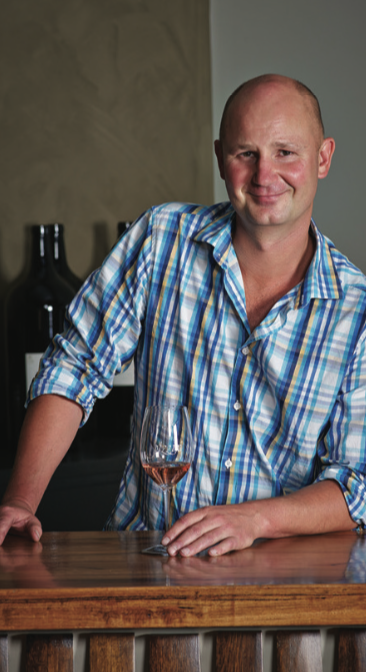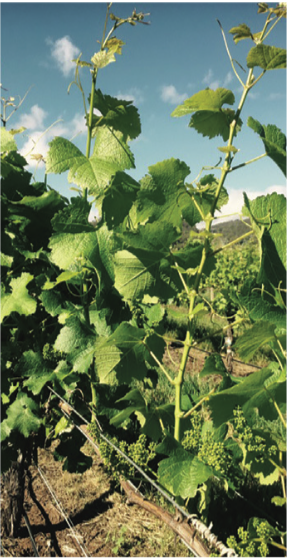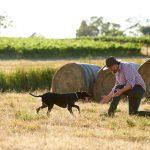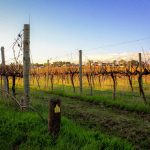By Joel Pizzini Winemaker, Pizzini Wines, King Valley, Victoria
First published in the November/December 2015 issue of the Wine & Viticulture Journal

Our family began experimenting with alternative grape varieties in the early 1990s, initially with Nebbiolo, then Sangiovese, Arneis, Verduzzo and Pinot Grigio. Prosecco, Verdicchio, Brachetto and then Friulano followed in the mid t o late 2000s.
We have vineyard sites dotted along the river flats beside the King Riv er as well as sites on the surrounding hills. Many of the early ripening, aromatic white varieties are planted along the flats.
Our family’s drive to foster the development of alternative grape varieties comes from a desire to experiment with different King Valley vineyard sites and the resultant fruit characters. The outcome is the production of wine styles that are layered and savoury and made to be enjoyed with food.
We released our first Friulano from fruit grown on the estate in 2014. The wine is dry, refreshing and easy drinking. It is a s tyle that is best drunk while the wine is young but can be cellared for up to five years.
VINEYARD SITE
Our Friulano vines are planted on the river flat on one of the c oolest sites on our King Valley property. The King Valley is a true v alley – the King River runs the length of the valley and the river flats are flanked by rolling hills that at certain points are between 200 and 800 metres above sea level. Each night, cold air drains from the surrounding mountain ranges and filters through the valley floor out to the Oxley Plains. This cold air usually comes through at about 9pm. It has been nicknamed the King Valley Doctor (after the Fremantle Doctor in Western Australia). The proximity of the river to the Friulano sites further influences the cooler temperatures experienced on this site.
The vines are planted on the old King River path. The soils here are a sandy clay loam packed with varying sized river rocks.
VINEYARD MANAGEMENT
Over recent years we have spent time on redeveloping vineyards – grafting over existing sites with new varieties – and planting out ne w sites on the hillsides with ne w clones of Sangiovese, Pinot Grigio and Nebbiolo.
The Friulano site was originally planted to Sauvignon Blanc which was on Schwarzmann rootstock. The site was grafted over to Friulano in 2012. The rows are 2800mm apart and the vine spacing is 1800mm. Now almost all of Pizzini’s vineyards are cane pruned, with two fresh canes left and arched over and the canopy vertically positioned. There are about six to eight buds on each cane. There is quite a lot of space between the vines. This is mainly because the vine spacing is so wide and was spur pruned when it was Sauvignon Blanc.
Just after budburst, all the double shoots are removed along with some shoots from the crown to reduce congestion and to make the cane selection during pruning quicker. To improve filtered light though the canopy some lateral growth and grape bunches may also be removed. Friulano’s characteristic big berries, tight bunches and thin skins cause it to be botrytis sensitive, so canopy management is crucial to help in preventing this.
WINEMAKING
The winemaking approach is based around creating a style that acknowledges the fact that it is very botrytis sensitive. Therefore, the fruit is harvested when the grapes are at a potential alcohol between 10.5- 11.5% alcohol volume. This provides the flexibility to harvest early and not change wine style and also to harvest clean fruit.
The fruit is mechanically harvested and crushed, destemmed and pressed to remove the skins from the juice as quickly as possible to reduce the impartment of bitter characteristics from the skins. The juice is cold settled and racked for fermentation and inoculated with Zymaflore VL3. Fermentation occurs between 13-16°C to preserve fruit aromas. After ferment the wine is racked off the heavy lees and left to stay with the light fluffy lees for maturation.
As the wine is picked at quite a low Baume, keeping the wine on fermentation lees for about four months helps to build some richness and fullness on the palate. The wine is bottled towards the end of the y ear it is made, giving the wine more time to develop prior to its release.

Friulano

By Peter Dry, Emeritus Fellow, The Australian Wine Research Institute
Background
In Australia, we know this variety as Friulano (FREE-ooh-LAHN-oh); however, Sauvignonasse is the preferred international name. Sauvignonasse is an old variety from the Gironde—but it has never been important in south west France where it was usually grown together with Semillon and Sauvignon Blanc (but it is no longer in official records). Today Friulano is best known in north east Italy where it has been grown in Friuli since the early 19th century as Tokai (Tocai). It is used in both varietal and blended wines in many different appellations, mainly in Friuli (e.g. Colli Orientali del Friuli), Lombardy and Veneto. Under pressure exerted by both Tokaj producers in Hungary and the EU since the early 1990s, Italy reluctantly agreed to discontinue the Tocai name in 2008 and consequently adopted the name Friulano. Slovenia also changed to Zeleni Sauvignon or Sauvignonasse. Other synonyms include Occhio di Gatto, Sauvignon de la Corrèze (central France), Sauvignon Gros Grain (central France), Sauvignon Vert (central France, Chile), Tai Bianco (Friuli) and Tocai Italico (Lombardy, Veneto). The so-called ‘Sauvignon Vert’ of California is actually Muscadelle. In 2010, there were 2911 ha in Italy and 190 ha in Slovenia. It is also grown in Ukraine, Russia and Argentina (515 ha). Chile has 785 ha—many of the oldest so-called Sauvignon Blanc vineyards in Chile were discovered to be Sauvignonasse in the late 20th century. Although they have now changed the name it is possible that Sauvignonasse is still a component of Chilean ‘Sauvignon Blanc’ wine. In Australia, Friulano has been found in old vineyards in Great Western, Mudgee and Goulburn Valley. There are at least four wine producers in Australia, mainly in cool regions of Victoria.
Viticulture
Budburst is late and maturity is midseason. Vigour is high with erect growth habit. Bunches are medium and well-filled to compact with small to medium berries which are gold with orange tints when ripe. The skin is thin but not as much as either Semillon or Sauvignon Blanc. Yield is moderate to high. Cane pruning is mainly used in Italy due to low fruitfulness of basal nodes but long spur pruning has also been used in Australia. Friulano has average susceptibility to downy and powdery mildews but it is sensitive to botrytis bunch rot. This variety is relatively homogeneous with some clonal variation in wine flavour profile and structure.
Wine
Wines are delicate, medium to full bodied, and have low acidity unless corrected. Descriptors include bitter almonds, dried grass, pear, apple, fennel and mint. There is some similarity with Sauvignon Blanc but Friulano wines are less crisp and aromatic with more body. Friulano is a good blending partner: for example, some Friuli producers use 40% in combination with Chardonnay (40%) and Sauvignon Blanc or Ribolla Gialla (20%). Some Australian producers have successfully blended it with Pinot Gris.




















